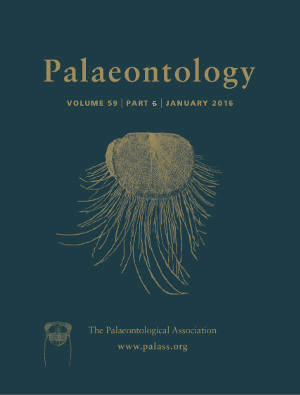Reg. Charity No. 1168330

Omnidens is a large feeding apparatus composed of circlets of teeth, first documented from the early Cambrian of China. Originally interpreted as the oral cone of a radiodontan, it was later reinterpreted as the introvert of a priapulan. In both cases the Omnidens mouthparts underpinned estimates of gigantic (c. 2 m) body size. Recent evidence has been used to suggest that pharyngeal teeth and radially‐arranged oral plates in the stem‐group onychophoran Hallucigenia and the lower stem‐group euarthropod Jianshanopodia are homologous to structures of the introvert in priapulans and other scalidophorans, and are thus primitive characters for moulting animals (Ecdysozoa) as a whole. Here we show that the early Cambrian gilled lobopodian Pambdelurion whittingtoni from Sirius Passet, Greenland, possesses a mouth apparatus identical to Omnidens, being composed of the same three zones with detailed similarities of sclerites in each zone. An oral cone with rings of pharyngeal teeth, radial plates and outer scalid‐like plates are ecdysozoan characters retained in the euarthropod stem group. Omnidens from China probably belongs to an unrecognized Pambdelurion‐like animal rather than being part of a giant priapulan.